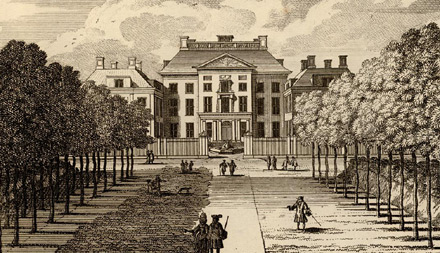England and the Netherlands: the ties between two nations > Het Loo Palace
William was a soldier in heart and soul and also an enthusiastic hunter. He was at his best on horseback and in the open fields, whether he was giving chase to the French arch-enemy or a wild boar. In 1684, Willem III bought the medieval castle Het Oude Loo in the neighbourhood of Apeldoorn. It soon became his favourite hunting lodge. In 1686, he asked the architect Jacob Pietersz. Roman to build him a new lodge next to the old one. When William and his wife Mary II Stuart became King and Queen of England in 1689, the place was enlarged and embellished in magnificent style, as befitting royal dignity, with for example sculptures by Romeyn de Hooghe, gardens and fountains. The French interior designer Daniel Marot was asked to take care of furnishing the palace.

Edward Southwell (1671-1730), who travelled to the Netherlands with William III in 1696, wrote in his diary among other things about his stay in Het Loo and the hunting parties. “Two or three times a week, William goes deer hunting”, writes Southwell. “On other days, he goes hare hunting or bird shooting in the morning and in the afternoon he uses falcons to hunt grey herons”. According to Southwell, “it is quite amusing to look a heron fighting against a hawk: the heron turns onto its back and raises its long bill, which sometimes puts the falcon off and sometimes even leads to its death.”

In the 70s and 80s of the twentieth century, the gardens were reconstructed and restored to their original state. Palace Het Loo has been open to the public since 1984. The apartments of William and Mary are on view, as well as rooms used by other members of the House of Orange who inhabited Het Loo later on.
> Go back to: Willem III: King-stadholder
